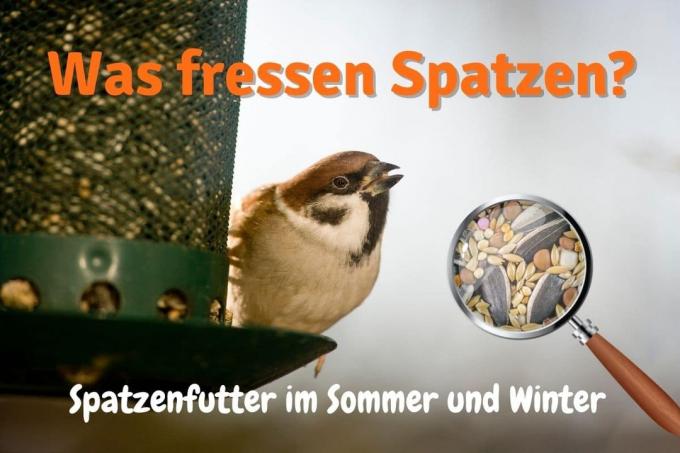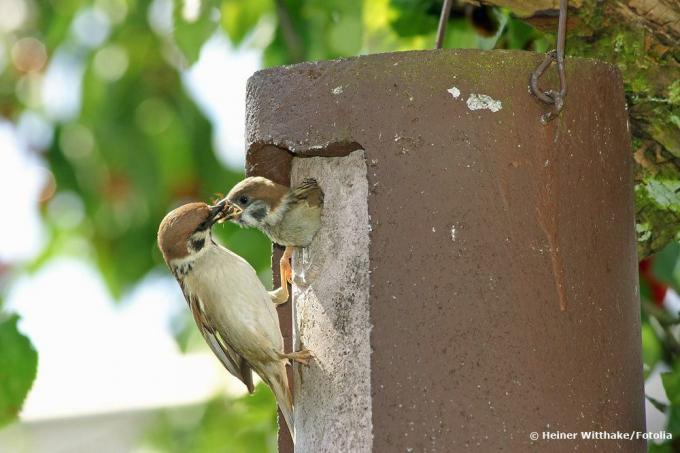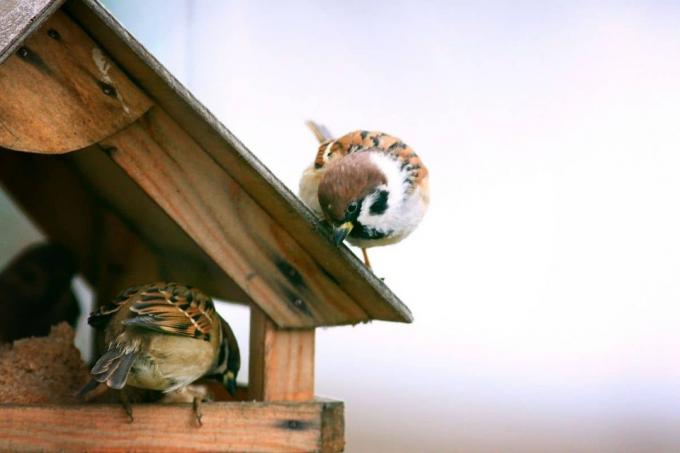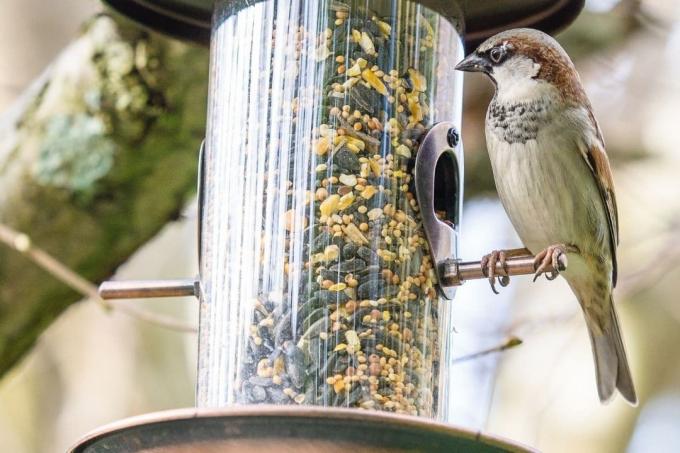
table of contents
- Characteristics
- Lining for the summer
- Forage for the winter
- Production of our own winter fat feed
- Feeding options
- frequently asked Questions
With its brown plumage, the sparrow does not stand out in terms of color, but it is one of the most famous native wild birds. You can find out here which food the sparrows, which live in Germany all year round, eat.
In a nutshell
- feed mainly plant-based food
- The natural garden offers a wide range of food
- All year round feeding recommended by experts
- Feed particularly high-fat in winter
- Protect feed from contamination
Characteristics
The bird known colloquially as the sparrow is more correctly called the house sparrow (Passer domesticus). With a size of up to 15 centimeters and a maximum weight of ten grams, it is one of the smallest native wild birds. In order to provide species-appropriate feed, it is therefore necessary to know and take into account the different eating habits.
Basically, adult sparrows eat vegetarian food, with the Fledglings are additionally fed insects by their parent animals.

Lining for the summer
The selection of food suitable for sparrows is immense, especially in summer. In a natural garden, the house sparrow can generally take care of itself with all kinds of fruits and seeds. In rock gardens or in low-maintenance monocultures, however, this is almost impossible. The one-sided planting results in Wild birds and their young only a few locations for adequate feeding. In order to create a sparrow-friendly garden, it is advisable to provide suitable feed. These include:
- Grain seeds such as hemp, millet and wheat
- Sunflower seeds
- Raisins
- oatmeal
- Corn
- (Dried herbs
- Berry
Tip: For the care of the young birds, it is also advisable to add mealworms or Insect larvae.
Forage for the winter
During the cold season of the year, the foraging for food is much more difficult for the sparrows, even in natural gardens. The animals need sufficient energy in order not to freeze to death, particularly when the cold is persistent. A supplementary feeding with particularly high-energy foods such as fatty seeds and nuts is therefore recommended.
Suitable food supplements for the winter are:
- Hazelnuts
- peanuts
- Walnuts
- Alder seeds
- soy

Production of our own winter fat feed
The selection of ready-made feed mixes for wild birds is huge, although due to their composition not all varieties are suitable as food for sparrows. However, a balanced and species-appropriate fatty food can also be found at home in just a few simple steps produce. The basis of the feed is vegetable fat, which is enriched with various seeds and nuts.
The manufacturing process is as follows:
- Heat 200 milliliters of vegetable fat
- Add 100 grams of the selected seeds and stir well
- Let the mixture cool for a few minutes
- Shape balls and work in a thread for hanging
- Let the food balls cool down for several days
The composition can be made individually, whereby the mixing ratio for a solid consistency should be 2 to 1.
Tip: With a ratio of six parts fat to one part seeds, a significantly more fluid consistency is achieved. The resulting pulp can then also be distributed on tree bark and branches or served in bowls.
Feeding options
The bird feeder is one of the best-known ways of offering food to birds. The problem with this method, however, is that the animals are in constant contact with the food and contamination by faeces and bacteria is almost inevitable. It also offers a Bird house Hardly any protection from the weather, so that the diet may grow mold from rain and snow.
In comparison, a preserved Feed silo the food in it from both the eating animals and the weather. While the food is filled in from above, the animals can only take it from below.

Note: Despite the airtight seal, the feed silo should be cleaned at least every six months.
frequently asked Questions
However, by far not all foods are suitable for feeding the sparrows. In particular, processed foods such as pasta and baked goods or biowaste should not be fed. In most cases, these lead to gastrointestinal problems and thus to the death of the birds.
In addition to the aforementioned production of your own fatty food, you can also use thin nets to make appropriate food dumplings for the summer. For this purpose, the food to be used is chopped up and put into a bag.
Due to the further decreasing habitats for animals of all kinds, but especially wild birds, advise all relevant institutions to feed the populations all year round obtain.
In addition to dwindling food sources, the procurement of clean drinking water is just as difficult for the sparrows. Especially in the warm summer months, the wild birds need sufficient fluids to drink, but also to cool down. Several two to three centimeter deep plates that are filled with rainwater cover the need.
Certain hedges and shrubs offer the birds protection on the one hand, but also serve as an optimal source of food for vegetable and animal feed. The preferred retreats by sparrows include hornbeams, liguster, Yew trees and beech trees.
